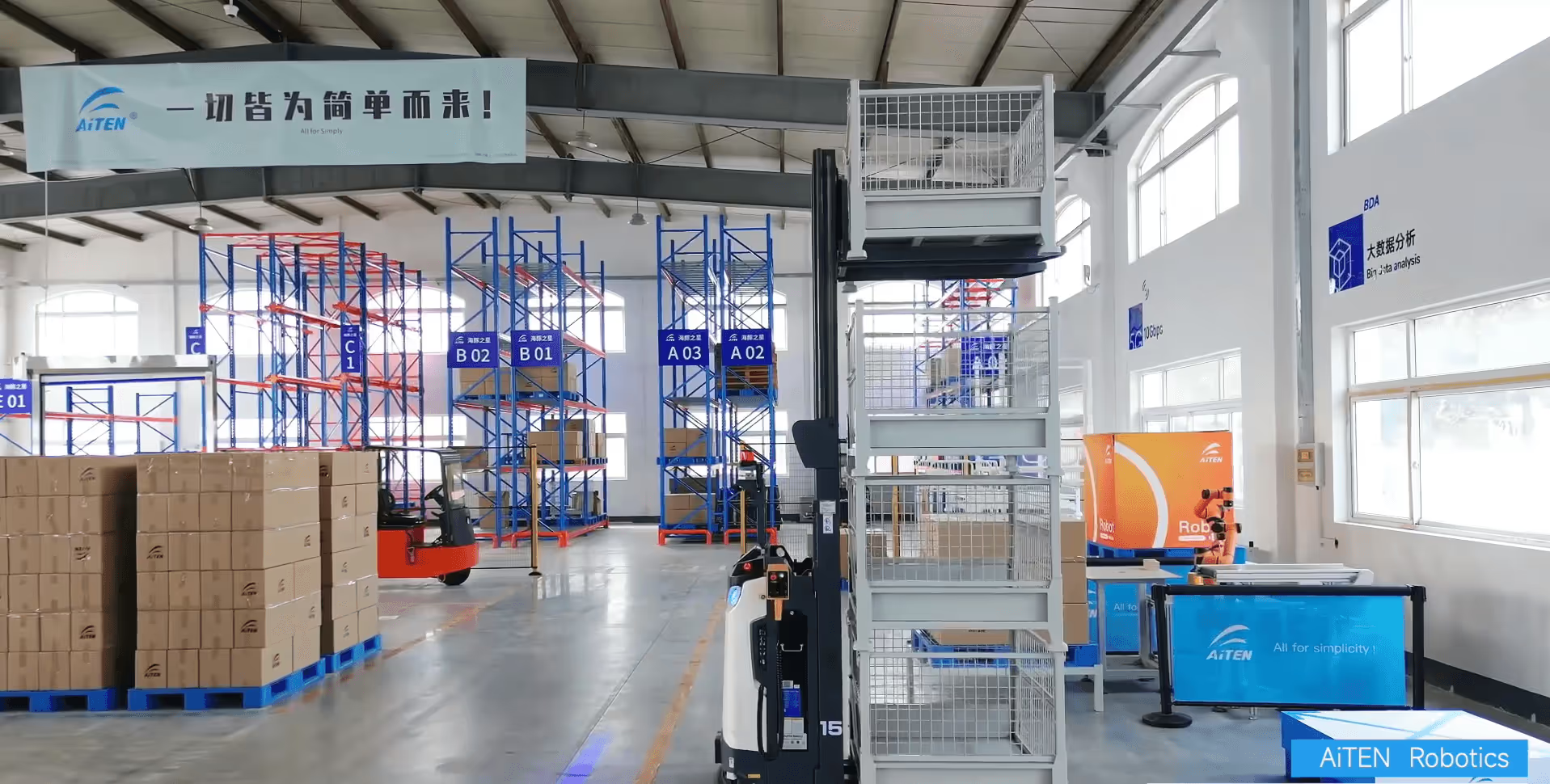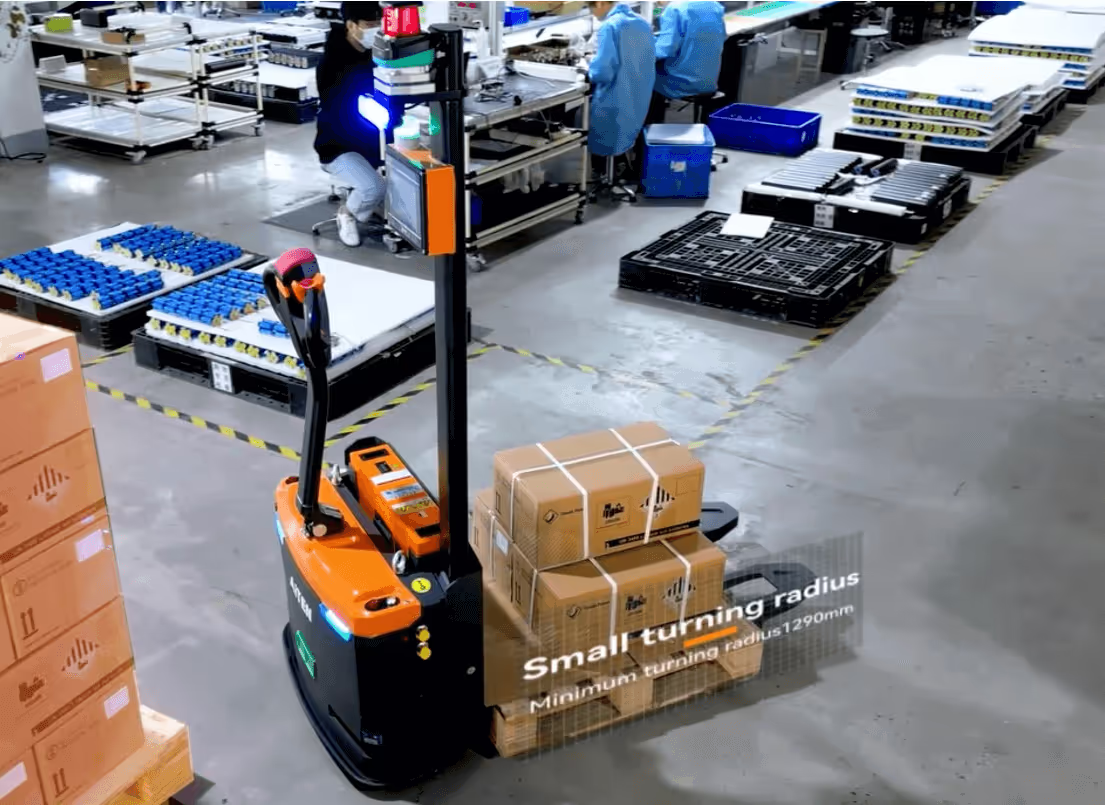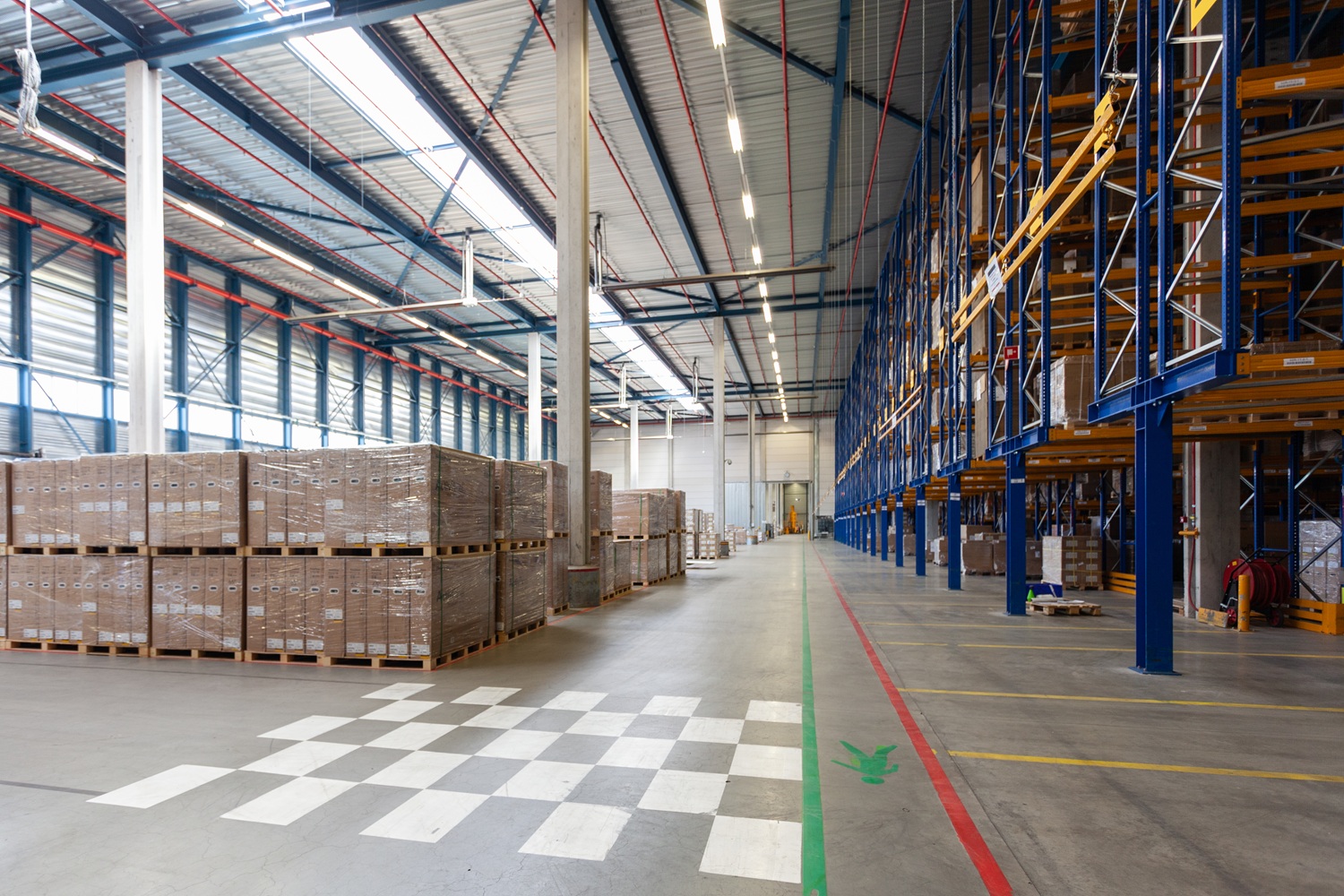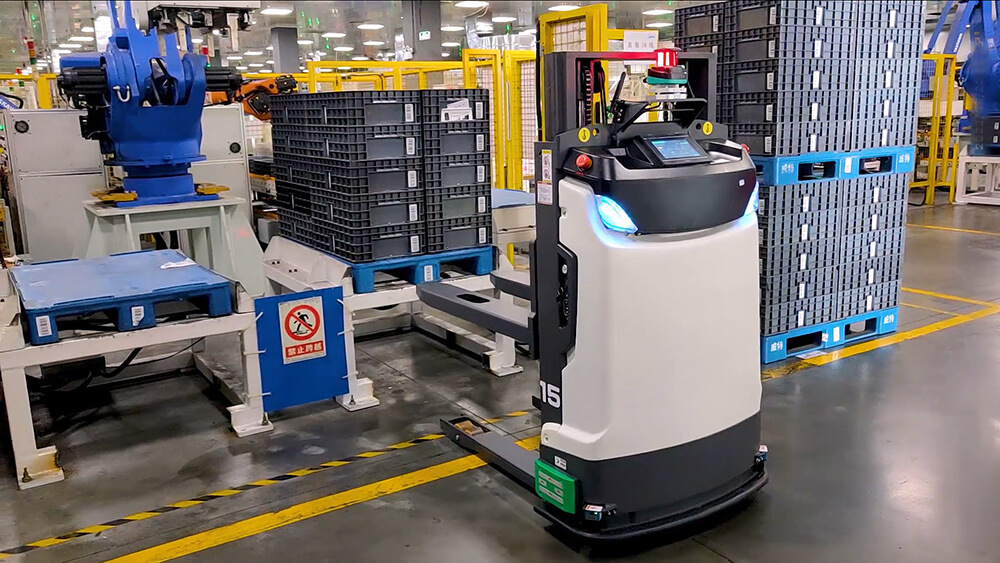¿Se automatizarán los conductores de carretillas elevadoras? El futuro de las operaciones de almacén

A medida que la automatización reconfigura la logística, surge una pregunta acuciante: ¿Sustituirán las carretillas elevadoras sin conductor a los operarios humanos? La respuesta no es un simple "sí" o "no", sino una transformación. Las carretillas sin conductor no están eliminando puestos de trabajo, sino redefiniéndolos. He aquí cómo.
1. El auge de las carretillas elevadoras sin conductor
Las carretillas elevadoras sin conductor, o AGV (vehículos de guiado automático), han pasado de ser herramientas de nicho a soluciones de uso generalizado. Equipados con LiDAR, navegación por IA y prevención de colisiones en 360°, los AGV modernos pueden:
- Navegue por pasillos estrechos (1,2 m de ancho) con una precisión de ±10 mm, superando a los conductores humanos en espacios reducidos.

- Trabaje 24 horas al día, 7 días a la semana, sin fatiga, causa principal del 62% de los accidentes con carretillas elevadoras.
El tamaño del mercado de AGVs y carretillas elevadoras sin conductor fue de 1.030 millones de USD en 2025 y se prevé que alcance los 1.150 millones de USD en 2025, expandiéndose aún más hasta los 2.700 millones de USD en 2033. Este crecimiento refleja el aumento de la automatización en los almacenes, el aumento de la penetración del comercio electrónico y la adopción generalizada de sistemas de manipulación de materiales impulsados por IA, impulsando el despliegue en los sectores de logística y fabricación a nivel mundial.
2. Por qué la automatización tiene sentido desde el punto de vista económico
Cómo las carretillas elevadoras autónomas están cambiando la cadena de suministro
Más allá de la seguridad, las carretillas elevadoras sin conductor abordan puntos críticos del sector:
- Escasez de mano de obra: En Estados Unidos, las tasas de rotación de los conductores de carretillas superan el 45%, pero los AGV no requieren contratación ni formación.
- Rentabilidad: Aunque las carretillas elevadoras sin conductor cuestan entre 20.000 y 100.000 dólares por adelantado, el coste total de propiedad es un 35% inferior al de las carretillas elevadoras manejadas por personas en 5 años (gracias a la reducción de accidentes, mantenimiento y uso de energía).
- Escalabilidad: Las flotas de AGV pueden ampliarse o reducirse a distancia, lo que resulta ideal para empresas estacionales.
Estudio de caso:
3. El elemento humano: Irremplazable pero transformado
Contrariamente a lo que se teme, la automatización no está eliminando puestos de trabajo, sino redefiniéndolos.
- Evolución del papel: Los conductores están pasando a ser "coordinadores de AGV", supervisando las flotas, resolviendo excepciones y optimizando los flujos de trabajo.

- Mejora de las cualificaciones: Las nuevas funciones exigen conocimientos técnicos (software de gestión de flotas, diagnóstico a distancia).
- Colaboración en seguridad: Las carretillas elevadoras sin conductor destacan en tareas repetitivas, mientras que los humanos se encargan de escenarios no estructurados (inspección de daños, apilamiento de palés complejos). La combinación de carretillas sin conductor y controladores de calidad humanos permite mejorar la precisión en el almacén.
4. Retos que impiden la automatización total
- Infraestructura heredada: Los almacenes más antiguos carecen de diseños adaptados a los vehículos AGV (por ejemplo, marcadores de códigos QR, estaciones de carga), lo que requiere costosas adaptaciones.
- Obstáculos normativos: Países como Alemania exigen la supervisión humana de los vehículos autoguiados en entornos mixtos, lo que ralentiza su adopción.
- Inversión inicial: Las pequeñas y medianas empresas tienen dificultades con los costes iniciales de las carretillas sin conductor, aunque están surgiendo modelos de leasing.
5. El futuro: Coexistencia, no competencia
Los líderes del sector prevén un modelo híbrido:
- Automatización selectiva: Las carretillas sin conductor se encargan del 80% de la manipulación rutinaria, mientras que los humanos gestionan las excepciones, reduciendo la carga de trabajo de los conductores sin despidos.
- Colaboración robótica: Las carretillas elevadoras sin conductor permitirán el traspaso humano-robot, como las carretillas elevadoras automatizadas que entregan palés a estaciones de embalaje humanas.
- Automatización ética: Las empresas de robótica dan prioridad al "aumento humano", diseñando carretillas elevadoras sin conductor para mejorar, no sustituir, las capacidades humanas.
Conclusión
Las carretillas elevadoras sin conductor no están aquí para eliminar puestos de trabajo, sino para hacerlos evolucionar. La verdadera pregunta no es "¿Se automatizarán los conductores de carretillas elevadoras?", sino "¿Cómo volverán las empresas a capacitar a los equipos para prosperar en un futuro automatizado?". Al igual que en revoluciones industriales anteriores, los ganadores serán aquellos que combinen la eficiencia de los AGV con el ingenio humano, creando cadenas de suministro más seguras y productivas para todos.
AiTEN Robotics es líder mundial en vehículos industriales autónomos (AMR/AGV) y soluciones de automatización logística. AiTEN Robotics ha desarrollado diez series de productos para satisfacer las necesidades de los escenarios de manipulación de materiales de pila completa. AiTEN Robotics ha desplegado más de 200 proyectos en más de 30 países y regiones, y cuenta con la confianza de numerosas empresas de la lista Fortune 500 en sectores como automoción, alimentación y bebidas, químico, farmacéutico, fabricación y logística de terceros, mejorando la seguridad operativa, la eficiencia y la preparación para el futuro.
Póngase en contacto con AiTEN para saber cómo nuestras innovadoras carretillas elevadoras autónomas y sistemas inteligentes pueden transformar sus procesos de manipulación de materiales.









_%E7%94%BB%E6%9D%BF%201.avif)

